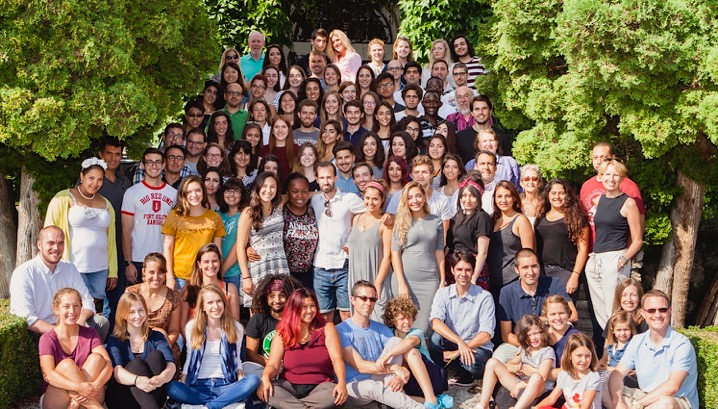Emerson Group Works to Change the Narrative of Migration

Fourteen Emerson students and faculty members traveled to Salzburg, Austria, last month on a mission to “reimagine migration” through multimedia storytelling.
The Emerson group joined a total of 70 students, 16 faculty, and 16 visiting scholars from around the world at the Salzburg Academy on Media & Global Change who gathered around the theme of “Media, Migration, and the Civic Imagination.” They were led by Paul Mihailidis, director and faculty chair of the Salzburg Academy, who is the Co-Director of the Engagement Lab and associate professor of Marketing Communication at Emerson.
The problem they grappled with: The way migration is portrayed in the media.
“[Participants] all found that media narratives of migration can be distant, often forgoing the human stories for larger, broad themes,” Mihailidis said.
The Academy teamed up with media scholar Henry Jenkins to explore the concept of “civic imagination,” which challenges people to find compelling ways to tell the individual, human stories involved in migration, whether from war, economic hardship, or pursuit of new opportunity.
The result of the three weeks of seminars and workshops is a digital publication called Move, which features more than 20 multimedia essays that reframe the migration narrative into something intensely personal, yet universally relatable.
“These stories give voice to the voiceless, provide intimate stories about the plight of refugees, and allow us to embrace the opportunities we have to engage with the causes we care for,” Mihailidis said.
Among the stories on Move are case studies (“From Refugees to Terrorists: How the media can help and hurt the perception of people,” “How a Diverse Community Tackles Migration: Dispatches from Clarksville, Maryland, USA”) and personal narratives (“Small Town Iranian-American: On building your community,” “We Are All Migrants and Here Is My Story”).
Madison Gallup ’18, a Media Arts Production major, wrote an essay about how migration has shaped the vibrant culture of her native South Florida. She said she valued the chance to work with people who were “unironically passionate.”
“They brought different backgrounds and perspectives I hadn’t yet directly encountered before, and I strongly believe that the Academy widened my worldview dramatically in just three weeks,” Gallup said.
Journalism major Caroline Long ’19 said the significance of the issues they confronted during the Academy, and the international worldview, made her feel like she was capable of making history.
“Meeting students and professors from Lebanon, Mexico, London, and China really changed my perspective and forced me to address my own narrative and how I see the media,” Long said.
Other Emerson students who attended the Academy were Yara Alathel ’17, Cameron Zoe Cronin ’17, Catherine Gessner ’17, Kaylee Largay ’18, John Sabbey ’19, Shawnie Wen ’18, and graduate student Kristina Stoilova.
Emerson faculty included Eric Gordon, associate professor of Visual and Media Arts, founding director of the Engagement Lab, and Salzburg Academy faculty member; Catherine D’Ignazio, assistant professor of Journalism, Engagement Lab fellow, and Academy visiting scholar; Amy Ansell, dean of the Institute for Liberal Arts and Interdisciplinary Studies and Academy visiting scholar; and Provost Michaele Whelan.
Categories